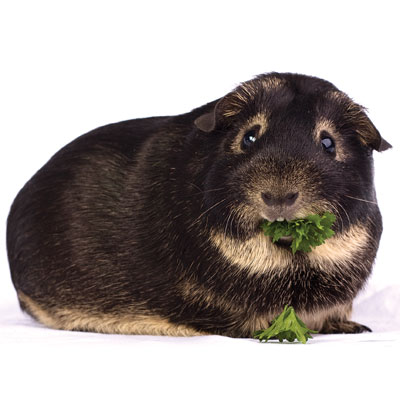Feeding cavies

It should be remembered that, like human beings, cavies cannot manufacture vitamin C so a daily supply of green food or roots needs to be made available. The options are numerous with grass a No. 1 favourite in summer time along with a good mixture of weeds (dandelion, sow thistle, hogweed, plantains, etc.). Perhaps cultivated foods are more familiar and cauliflower and cabbage leaves along with apple cores, cucumber, etc. can be fed. Carrots and raw beetroot can be bought in bulk and are favourites too. Kale, swede and fodder beet are other alternatives for autumn and winter feed.
Dry food can be one of the many special guinea pig mixes and these can offer a near complete diet but would you like muesli for breakfast, dinner and tea? Variety improves the quality of life. Other options are crushed oats, bran mash and dried/baked bread. In addition it is necessary to give good meadow hay daily as bulk fibre and to occupy the pig‘s day. Freeze-dried grass (e.g. Readigrass) is also recommended as an addition and treat.
The normal arrangement is to feed dry food in the morning with greens or roots fed in the evening along with a handful of hay but some people feed only once a day and provided sufficient volume and variety is given in the one feed, there should be no detrimental outcome.
Water should be made available, especially if one relies mainly on the special mixes with only a limited amount of green food.